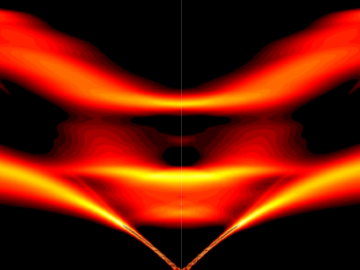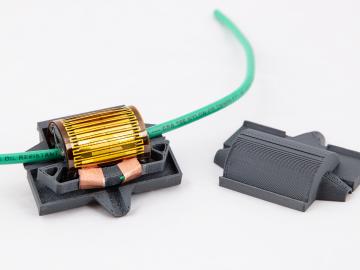
Filter News
Area of Research
- (-) Computational Engineering (3)
- (-) Energy Science (56)
- (-) Materials (16)
- Advanced Manufacturing (4)
- Biology and Environment (12)
- Building Technologies (1)
- Computational Biology (1)
- Computer Science (12)
- Electricity and Smart Grid (1)
- Fusion and Fission (1)
- Materials for Computing (9)
- Mathematics (1)
- National Security (5)
- Neutron Science (11)
- Quantum information Science (5)
- Sensors and Controls (1)
- Supercomputing (41)
News Topics
- (-) Computer Science (15)
- (-) Energy Storage (25)
- (-) Frontier (1)
- (-) Grid (9)
- (-) Physics (3)
- (-) Polymers (5)
- 3-D Printing/Advanced Manufacturing (38)
- Advanced Reactors (2)
- Artificial Intelligence (5)
- Big Data (4)
- Bioenergy (11)
- Biology (5)
- Biomedical (2)
- Biotechnology (2)
- Buildings (11)
- Chemical Sciences (2)
- Clean Water (6)
- Composites (7)
- Coronavirus (2)
- Critical Materials (4)
- Cybersecurity (2)
- Environment (28)
- Fusion (3)
- High-Performance Computing (5)
- Isotopes (2)
- ITER (1)
- Machine Learning (2)
- Materials (22)
- Materials Science (30)
- Mathematics (1)
- Mercury (1)
- Microscopy (10)
- Molten Salt (1)
- Nanotechnology (13)
- Neutron Science (11)
- Nuclear Energy (8)
- Quantum Computing (1)
- Quantum Science (4)
- Security (2)
- Space Exploration (3)
- Statistics (1)
- Summit (2)
- Transportation (27)
Media Contacts

A detailed study by Oak Ridge National Laboratory estimated how much more—or less—energy United States residents might consume by 2050 relative to predicted shifts in seasonal weather patterns

A new method developed at Oak Ridge National Laboratory improves the energy efficiency of a desalination process known as solar-thermal evaporation.
A team of scientists led by Oak Ridge National Laboratory have discovered the specific gene that controls an important symbiotic relationship between plants and soil fungi, and successfully facilitated the symbiosis in a plant that

A team of researchers at Oak Ridge National Laboratory have demonstrated that designed synthetic polymers can serve as a high-performance binding material for next-generation lithium-ion batteries.

A study led by Oak Ridge National Laboratory explored the interface between the Department of Veterans Affairs’ healthcare data system and the data itself to detect the likelihood of errors and designed an auto-surveillance tool

Scientists have discovered a way to alter heat transport in thermoelectric materials, a finding that may ultimately improve energy efficiency as the materials

Ionic conduction involves the movement of ions from one location to another inside a material. The ions travel through point defects, which are irregularities in the otherwise consistent arrangement of atoms known as the crystal lattice. This sometimes sluggish process can limit the performance and efficiency of fuel cells, batteries, and other energy storage technologies.

Scientists at Oak Ridge National Laboratory have developed a low-cost, printed, flexible sensor that can wrap around power cables to precisely monitor electrical loads from household appliances to support grid operations.


Vera Bocharova at the Department of Energy’s Oak Ridge National Laboratory investigates the structure and dynamics of soft materials.


